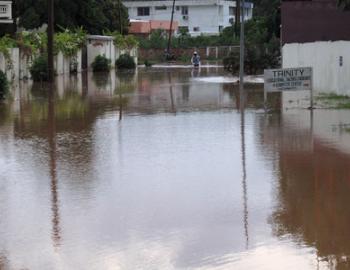REPORT: Real-time extreme weather event attribution with forecast seasonal sea surface temperatures
REPORT: Real-time extreme weather event attribution with forecast seasonal sea surface temperatures
This report presents the method which can assess the fraction of attributable risk of a severe weather event due to an external driver in real-time. Watch the accompanying video here.
Within the last decade, extreme weather event attribution has emerged as a new field of science and garnered increasing attention from the wider scientific community and the public. Numerous methods have been put forward to determine the contribution of anthropogenic climate change to individual extreme weather events. So far nearly all such analyses were done months after an event has happened.
Taking the England 2013/14 winter floods as an example, we demonstrate that the change in risk for heavy rainfall during the England floods due to anthropogenic climate change, is of similar magnitude using either observed or seasonal forecast sea surface temperatures (SSTs). Testing the dynamic response of the model to the anomalous ocean state for January 2014, we find that observed SSTs are required to establish a discernible link between a particular SST pattern and an atmospheric response such as a shift in the jetstream in the model. For extreme events occurring under strongly anomalous SST patterns associated with known low-frequency climate modes, however, forecast SSTs can provide sufficient guidance to determine the dynamic contribution to the event.
If we are able to present evidence for a causal link (or the absence of it) between a specific extreme event and climate change, the public will more likely understand the reality and the extent of the problem and it will be harder to dismiss climate change or to blame it as the sole cause, respectively. Disaster risk management can be improved and the science on the topic of climate change can be advanced.
Download the report here: Real-time extreme weather event attribution with forecast seasonal sea surface temperatures



